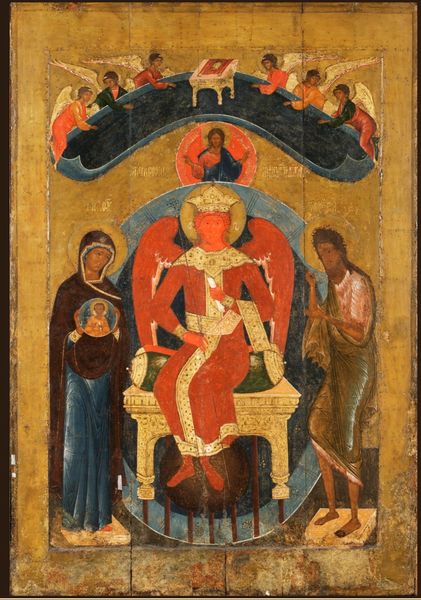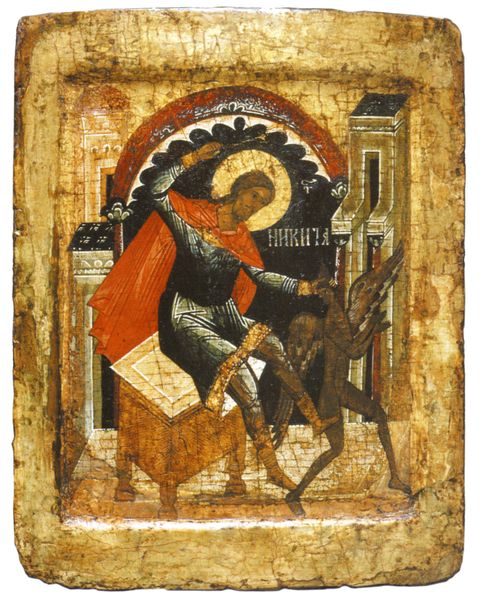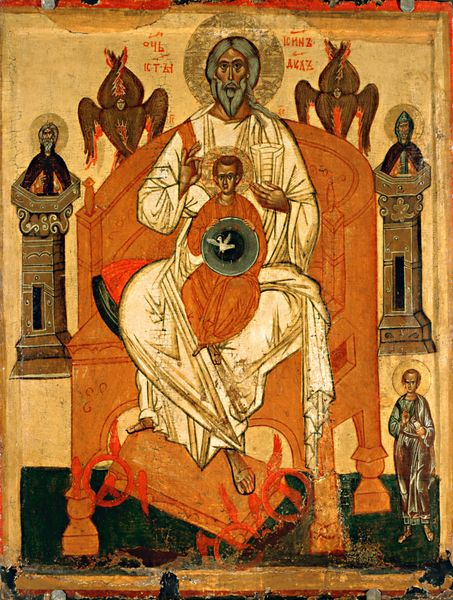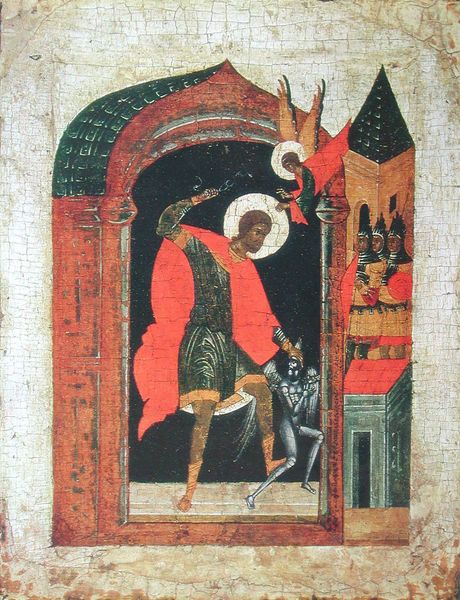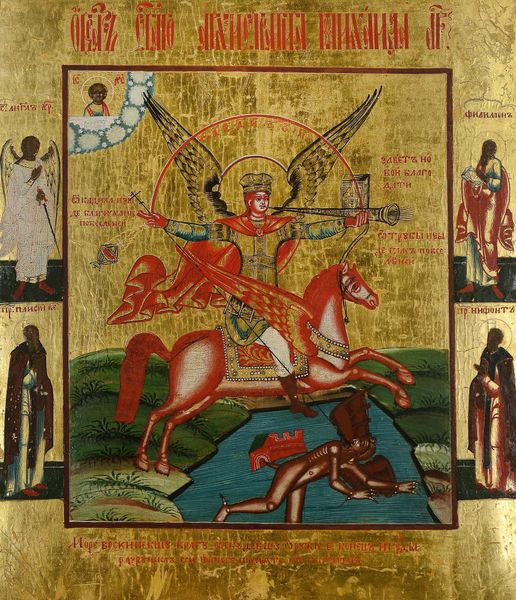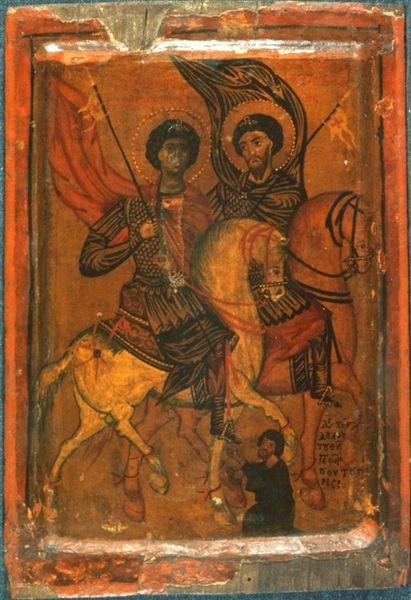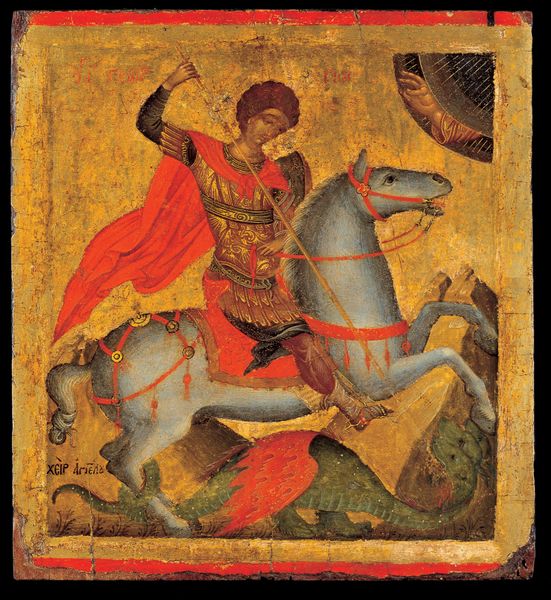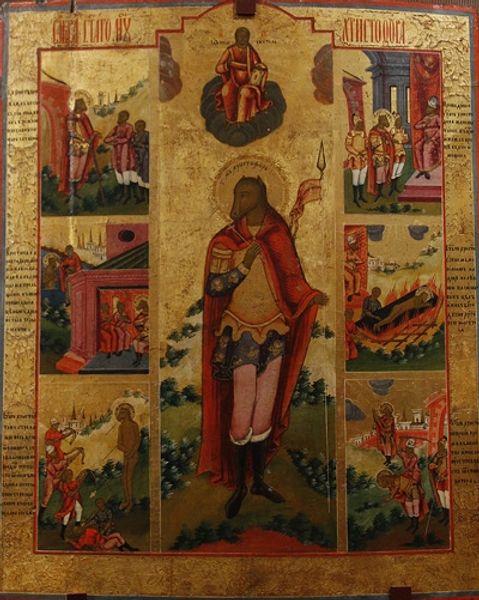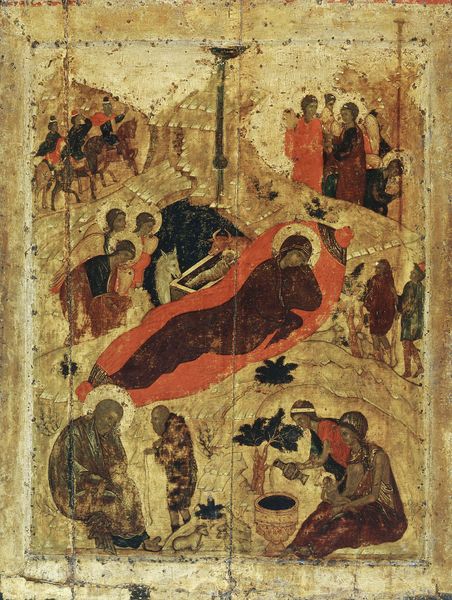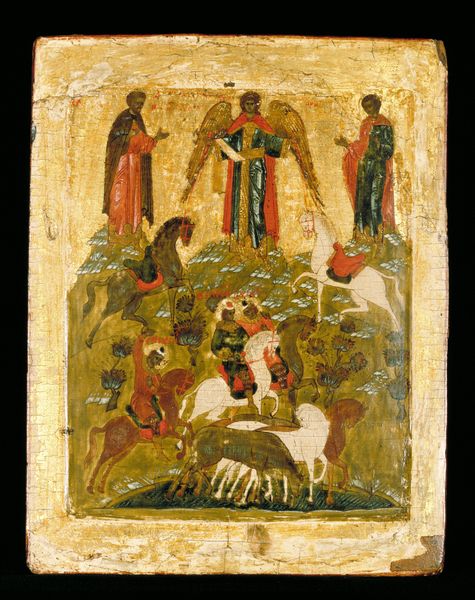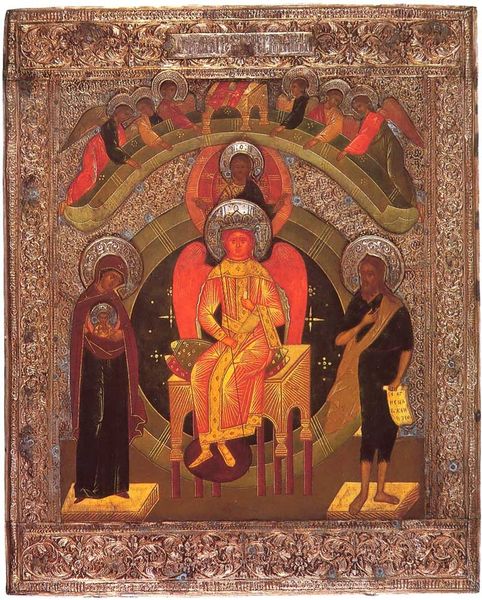
tempera, painting
#
byzantine-art
#
medieval
#
narrative-art
#
tempera
#
painting
#
figuration
Copyright: Orthodox Icons,Fair Use
Editor: This is "Saint Nikita slaying the demon," a tempera painting from 1850. It has a really interesting Medieval, Byzantine art style. I am immediately drawn to how the artist contrasted the serene expression of Saint Nikita with the grotesque demon he's subduing. How do you interpret this work, particularly focusing on the composition? Curator: Let us consider first the formal elements: observe the iconographic presentation, the flatness of space, and the symbolic use of colour. Notice how Nikita's ochre robes create a visual harmony with the background, while the demon, rendered in harsher reds and browns, projects conflict. Does this opposition not reveal an ideological intention through formal means? Editor: Yes, I see that contrast now, with those stylistic choices creating the tension. Can we dive deeper into that ideological intention? Curator: Precisely. What about the gold leaf detailing surrounding Nikita? Does this emphasis on divinity draw the viewer in, creating a hierarchy that reinforces Nikita's righteousness? We must look at each of these deliberate compositional choices to uncover meaning. The elongated figures, too—what effect does this Byzantine convention produce here? Editor: I guess I see how the stylistic choices work together to show meaning by focusing on his power and piety. Curator: Indeed. Consider also the linear nature of the drapery folds in his garments—it reinforces a sense of idealized form and a break from naturalistic representation, all reinforcing thematic tensions through visual encoding. And, if that linearity contrasts with the frenzied twists of the demon, is this not further encoding meaning through purely visual difference? Editor: So, by analyzing these structural relationships—colour, line, form—we can truly decode the artwork's intended meaning. Curator: Exactly. Formalism invites us to look beyond the narrative to consider how visual choices inherently convey and consolidate systems of belief. Through careful analysis, we unveil the inherent values perpetuated in pictorial form. Editor: I never thought about breaking down a piece this way before. Curator: Keep questioning the how—how form dictates feeling and perpetuates systems. Keep a record of your semiotic analyses for this will guide your progress into complex readings in years to come.
Comments
No comments
Be the first to comment and join the conversation on the ultimate creative platform.

